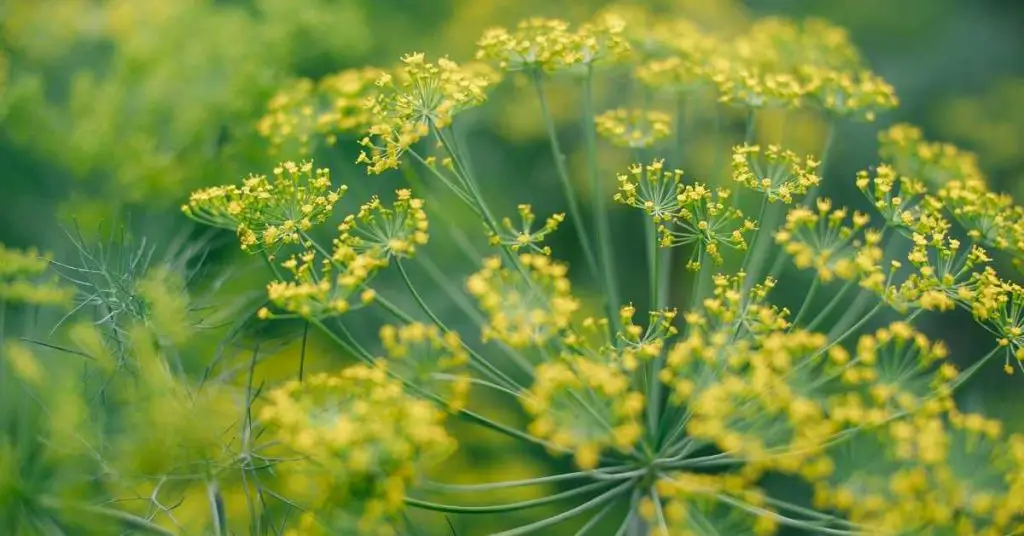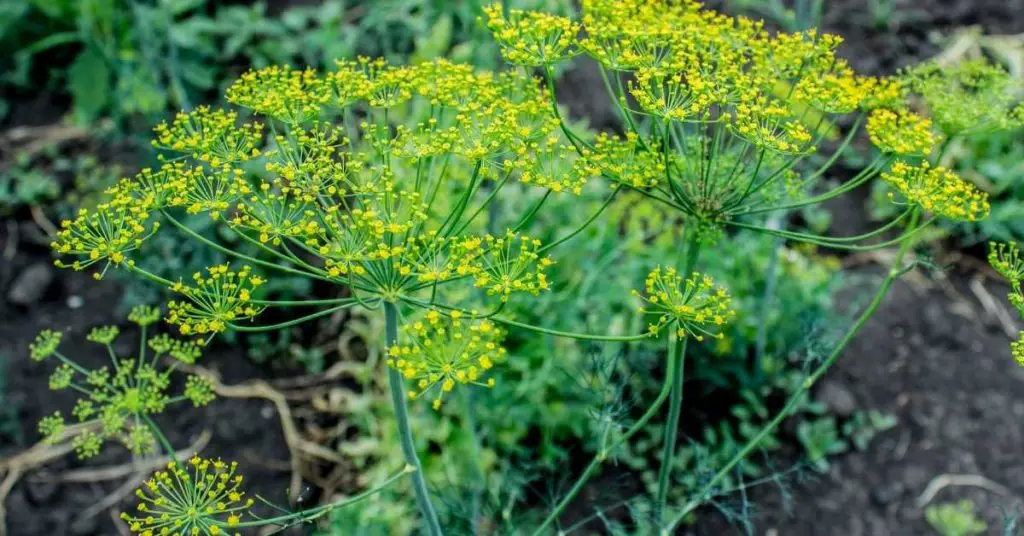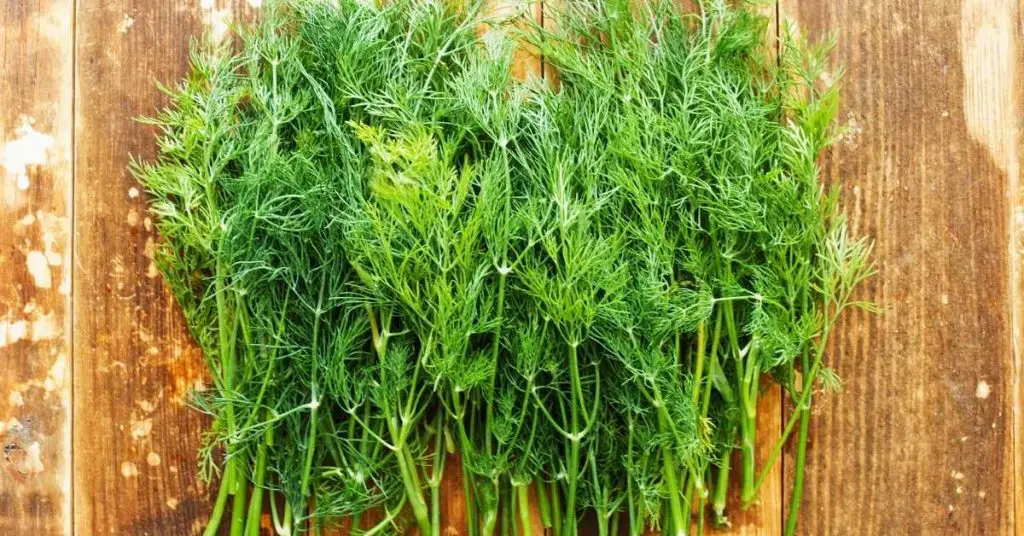Why Is My Dill Turning Brown?
Why is my dill turning brown? There are several reasons why your dill weed plant would turn brown. They include the dill plant has reached its full life expectancy and has grown leaves, produced a flowers stalk, and gone to seed. It could also be because dill requires full sun and plenty of moisture to stay in the best condition. Not enough sun or enough water and your dill plant will turn brown. Your dill plant can also turn brown as a result of overwatering which causes root rot and will kill your plant altogether.
If you’re like me, you love growing your own herbs. Dill is one of my favorites to grow, but lately, I’ve been noticing that my dill is turning brown. I’ve been doing some research online to try and find an answer, and I thought I would share what I’ve found with all of you. Keep reading to learn why your dill might be turning brown, and how to fix the problem!
What is Dill?
Dill is a versatile herb that can be used in many different dishes. Whether you’re looking to add some flavor to your soup or salad, or simply want to garnish your meal with a bit of green, dill is a great option.
It is commonly used in pickling recipes, as well as in dishes from many different cultures including Scandinavian, Russian, German, and Indian cuisine. Dill can also be used to make a delicious tea!
Dill is a member of the Apiaceae family, which also includes carrots, celery, fennel, and parsley. All of these plants share a similar appearance, with long green leaves and white flowers.

What Causes Dill to Turn Brown?
There are several possible causes of this problem. One possibility is that the dill is not getting enough water. Dill requires regular watering, especially during hot weather. If the soil around the plants is allowed to dry out, the leaves will begin to turn brown.
Another possibility is that the dill is being exposed to too much direct sunlight. This can cause the leaves to scorch, turning them brown at the edges.
Finally, dill may also turn brown if it is not getting enough nutrients. Be sure to fertilize regularly to avoid this problem.
How to Prevent Dill from Turning Brown on the Plant
No one likes to see their plants turning brown, and dill is no exception. Fortunately, there are a few simple steps you can take to prevent your dill plants from turning brown:
First, make sure that you plant dill in an area that gets plenty of sunlight. Dill thrives in sunny conditions, so if your plants are in a shady spot, they may be more likely to turn brown.
Second, water your dill plants regularly. drought stress can cause plants to turn brown, so keeping them well-watered will help them stay healthy and green.
Third, fertilize your dill plants every few weeks to give them the nutrients they need to grow. By following these simple tips, you can keep your dill plants looking their best.
Finally, make sure to harvest your dill regularly while the leaves are looking their best. You want to remove the best-looking but oldest growth so that you are getting to harvest fresh dill but also encouraging new growth through harvesting. This will keep the plant producing fresh dill longer.
What Conditions Does Dill Like?
While it can be grown in a number of different climates and in different soil conditions, dill prefers warm weather and plenty of sunlight.
It also needs well-drained soil with a moderate amount of nutrients and a slightly acidic pH of 5.8 to 6.5.
When growing dill, it’s important to keep the plant well watered, as drought can cause the leaves to turn brown and become bitter. With proper care, dill will thrive and provide you with an abundance of flavorful leaves to enjoy all season long.

Should Dill Be in Full Sun?
Yes, dill should be in full sun! It does best in a sunny location that gets at least 6 hours of sun per day. Choose an area that is protected from the wind because the dill plant is very tender and can succumb to strong winds.
Why Is My Dill Going Yellow?
If your dill is looking a little bit yellow, there could be a few reasons why. One possibility is that the plant isn’t getting enough sunlight. Dill loves the sun, so if it’s not getting at least six hours of direct sunlight a day, that could be the problem.
Another possibility is that the soil isn’t well-drained. Dill doesn’t like to sit in wet soil, so if the plant is sitting in waterlogged dirt, that could be causing the leaves to turn yellow. Lastly, it could be a nutrient deficiency.
If the soil is lacking in nitrogen or other key nutrients, that could lead to a yellowing of the leaves.
Can You Use Brown Dill?
Yes, you can use brown dill in cooking. The leaves may be a little bitter, but they will still add flavor to your dishes. Be sure to harvest the leaves from the bottom of the plant so that you are getting the youngest, most flavorful leaves.
You also need to remember that when you harvest leaves and seeds to dry them that they will dry out and turn brown during that process. Seeds can be saved to grow out more dill next season or even a later harvest during the same year. The dried leaves can be used to make homemade seasoning blends.
How Do You Bring Dill Back to Life?
As long as the plant isn’t completely dead, there are a few easy steps you can follow to bring your plant back to life.
- First, make sure it is getting enough sun. Dill loves full sun, so if your plant is in a shady spot, move it to a sunny location.
- Second, water your dill regularly. The soil should be moist, but not soggy.
- Third, fertilize your dill every few weeks with a balanced fertilizer.
- Fourth, pinch back the flowers and seed heads to encourage new growth.
By following these simple tips, you can revive your dill plant and enjoy fresh pickles all season long!
Is Dill Still Good After It Flowers?
Dill is an annual plant which means that it will go through its entire life cycle in just one growing season. It will produce dill for you to use, flower, and produce seeds in just a matter of a few months.
While the leaves of the dill plant are indeed edible once the plant flowers and produce seed, it will die back. This means that you won’t be able to harvest any more dill once the plant has flowered.
However, the seeds of the dill plant can be used as a spice, so if you have a dill plant that is flowering, you can still make use of it. Dill seeds have a similar flavor to dill leaves, so they can be used in any recipe that calls for dill.
You can also dry the seeds and store them for future use. So even though a dill plant only has a limited lifespan, it can still be a valuable addition to your kitchen.

Can You Eat Dill After It Flowers?
While the taste of dill may change slightly after the plant flowers, it is still safe to eat. Though the leaves of the dill plant are the most commonly used part, the flowers can also be eaten. Dill flowers have a milder flavor than the leaves and can be used fresh or dried. They can be added to salads or used as a garnish for soups and other dishes.
There are a few things to keep in mind when using dill flowers. First, use them in moderation when adding to dishes, as they still pack a powerful flavor punch. When used in moderation, dill flowers can add a unique and delicious flavor to many recipes. So go ahead and experiment with this versatile herb – your taste buds will thank you!
FAQs
Common questions about dill:
Does Dill Need a Lot of Water?
Regular watering is essential for healthy dill plants. If the ground dries out, the plants will wilt and the leaves will begin to turn brown. However, if you water dill too frequently, the roots will rot and the plants will eventually die.
So, how often should you water dill? It depends on the weather and soil conditions in your garden. During hot, dry weather, dill plants will need to be watered more often. In cooler weather or when it rains frequently, you can water dill less often. Pay close attention to your dill plants and water them when they need it.
With a little care, you can keep your dill plants healthy and vigorous all season long!
How Often Does Dill Need to Be Watered?
Dill doesn’t like for its soil to dry out whereas most vegetables, herbs, and fruits do like to dry out some before getting their next watering. Dill wants to have a consistently ground. If you let dill dry out – it will hurt your dill plant.
The best way to have consistent watering is to use a drip irrigation system to water your garden on a timer so they get a little bit of water each day.
The other way to check to see if your plant needs water is to simply check the top inch or two of soil around your dill plant. If the top inch or two of soil is dry – then it is time to water your plants again.
How to Plant Dill in a Pot
Start by planting your dill in a pot that is filled with a well-draining and slightly acidic potting mix. If you are not sure how to make potting mix slightly acidic then take your favorite potting mix and mix it with some peat moss. Mix the 75% potting mix and 25% peat moss.
Peat moss is naturally acidic so adding it in a small amount like this will slightly adjust the pH of the container.
Next, add some granular fertilizer as a slow release to the container and mix it into the potting mix. Pre-moisten the potting mix to the point where you can form a clump in your hand and water doesn’t pour out when you squeeze.
Plant your dill plant or seeds into the container.
I like to use Pro-Mix for all of my containers because it is a high-quality mix and grows amazing plants.
How Do You Take Care of Potted Dill?
Dill is pretty easy to grow once you have it planted. Just follow these simple steps:
- Place the pot in an area that gets full sun.
- Dill doesn’t need a lot of fertilizer, but you can feed it every few weeks with a balanced liquid fertilizer.
- Water the dill regularly, letting the soil dry out somewhat between watering.
- When the dill plants are around 6 inches tall, you can start harvesting the leaves. Cut them off at the stem, and they’ll continue to grow back.

In Conclusion
To recap, there are several reasons why your dill weed plant would turn brown.
- The Dill plant has reached its full life expectancy and is ready to set seeds.
- The Dill plant isn’t getting the right growing conditions. Full sun and consistent watering.
- You have overwatered your Dill plant and that has caused root rot.
You can always plant more dill even before your current plants are finished to have fresh dill longer into the season. Just plant new seeds every 2-3 weeks to have a prolonged harvest.
When it comes to correcting issues like not enough sun or watering issues, if you can catch it quick enough to correct your mistake – most of the time the plant will survive depending on the extent of the damage.
Dill weed is a great herb to grow in your garden, and if you follow these simple tips, you’ll be able to enjoy the delicious taste of fresh dill all season long!





